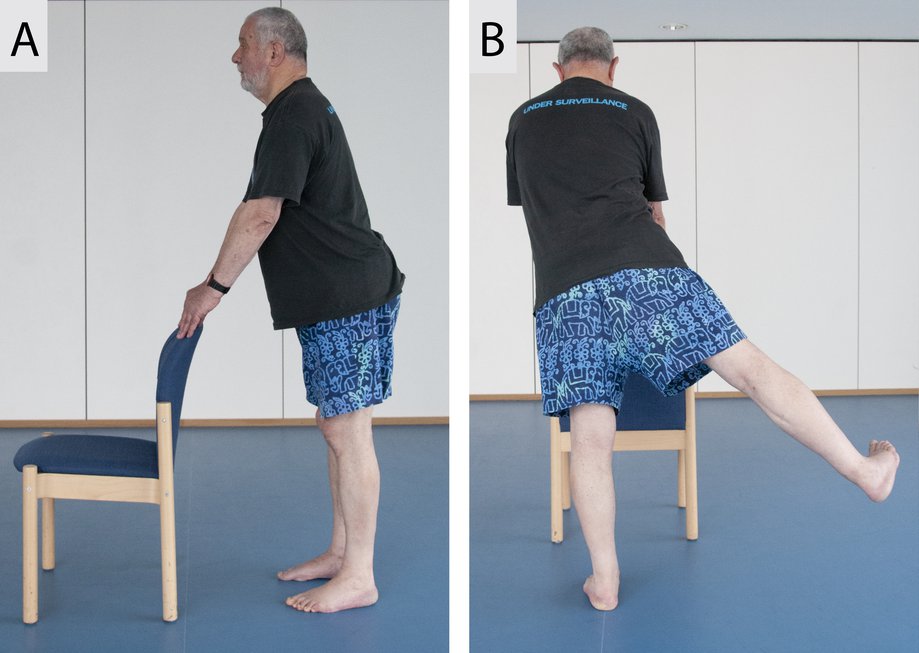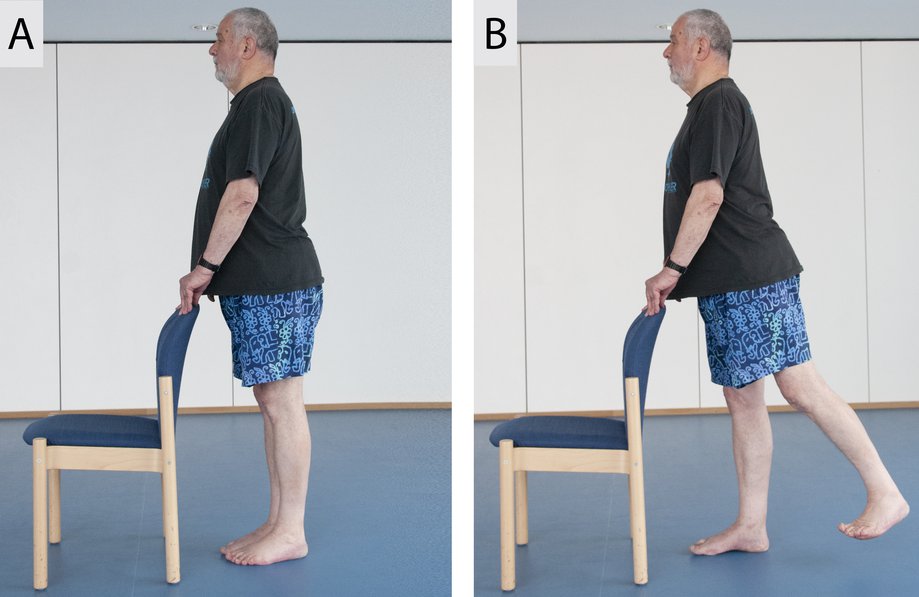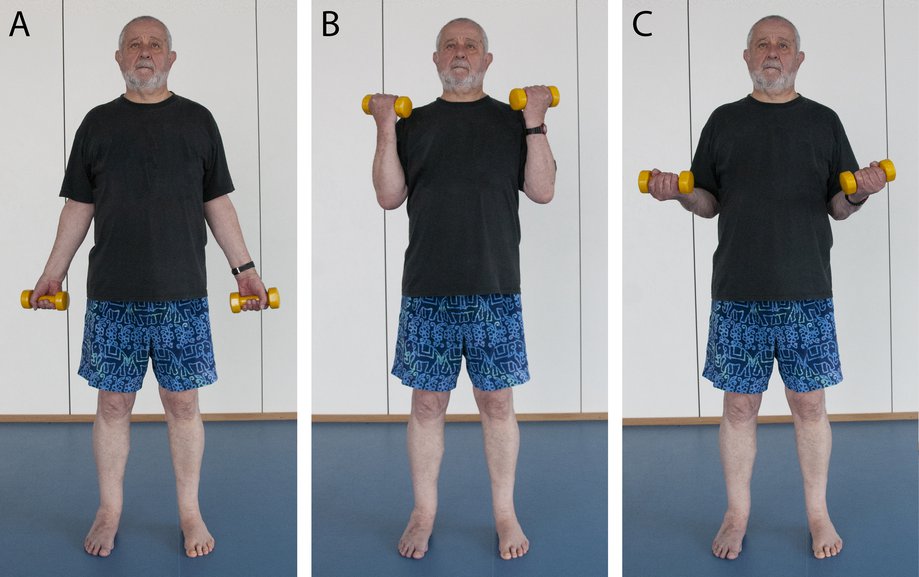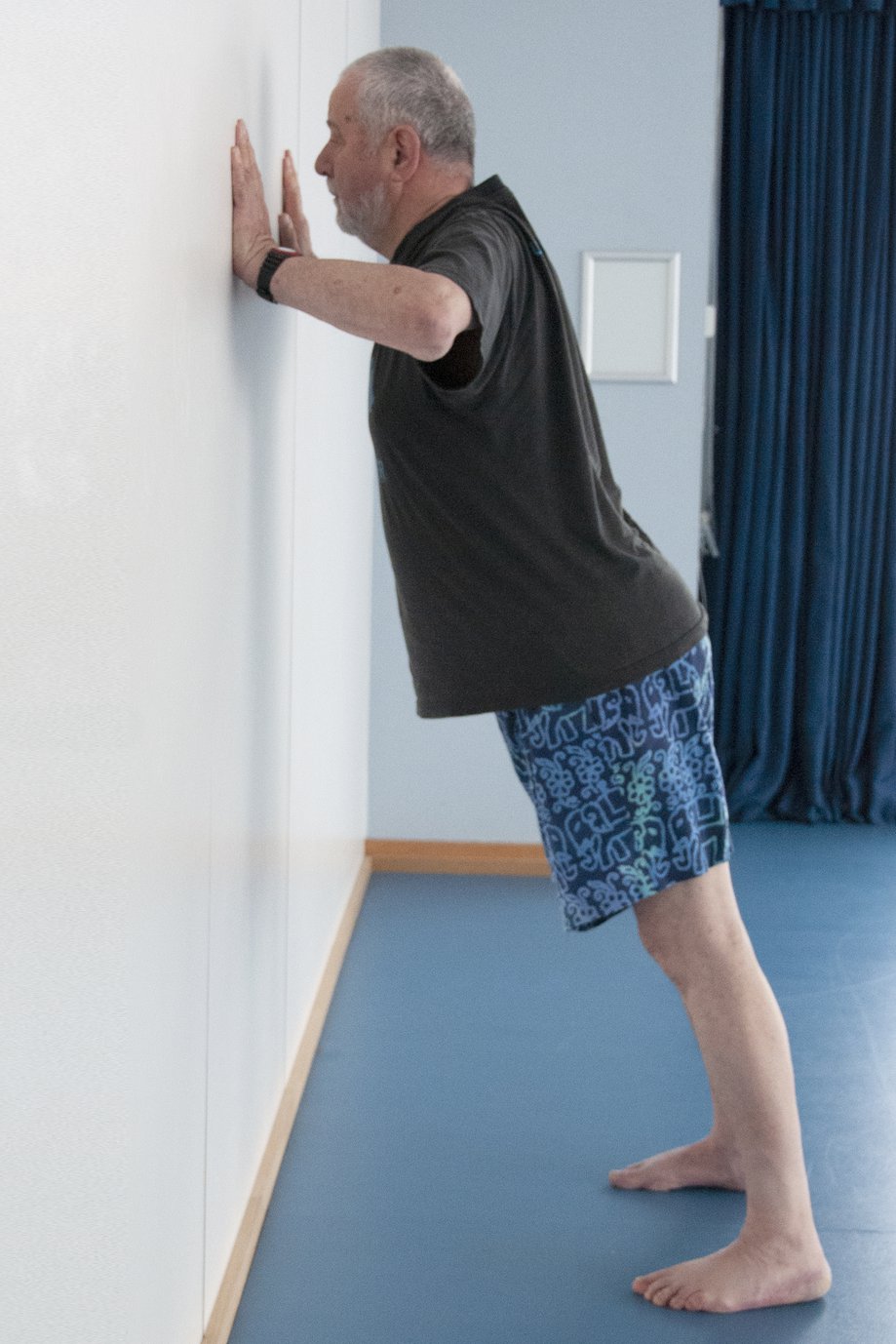Today’s blog features the second and concluding part of our look at a range of gentle ‘strength exercises’ designed to help improve and maintain muscle strength as we get older or less mobile.
Whatever mobility issues you’re facing, it’s important to keep exercising regularly in any way you can manage. Giving in to immobility can lead to various medical problems, while exercising regularly can help improve your balance, core strength and mobility, reducing the risk of falls.
These exercises, taken from the NHS Choices website, can be done at home or in groups. We featured the first three in yesterday’s blog, with the final four described below. You will need a solid stable chair that does not have wheels and will not slide away from you on a slippery floor. Most people should be able to manage these gentle exercises at their own pace, but if any of them cause you a particular problem, avoid that exercise or see if you can adapt it to suit your circumstances.
 Sideways leg lift: This exercise will help with leg strength, balance and flexibility in your hips. Start by standing behind your chair, resting your hands on the top of the backrest for stability (fig. A). Now slowly raise your right leg to the side going only as far as is comfortable (fig. B). Keep your back and hips straight and try to avoid tilting over to the left. Slowly return to your starting position, check your stance and then repeat the exercise, but this time raising your left leg. Aim to raise and lower each leg five times, but don’t worry if that’s too much initially – you can build up the number of repetitions gradually and you should find you can raise your legs a little further after some practice.
Sideways leg lift: This exercise will help with leg strength, balance and flexibility in your hips. Start by standing behind your chair, resting your hands on the top of the backrest for stability (fig. A). Now slowly raise your right leg to the side going only as far as is comfortable (fig. B). Keep your back and hips straight and try to avoid tilting over to the left. Slowly return to your starting position, check your stance and then repeat the exercise, but this time raising your left leg. Aim to raise and lower each leg five times, but don’t worry if that’s too much initially – you can build up the number of repetitions gradually and you should find you can raise your legs a little further after some practice.
 Leg extension: This is similar to the exercise above and will bring similar benefits, but this time you will be raising your legs backwards. Stand behind your chair with your hands on the backrest for stability (fig. A). Standing upright, raise your left leg backwards while keeping it straight and not bending at the knee (fig. B). Try to avoid arching your back or leaning forward as you raise your leg behind you and, again, only go as far as you can manage comfortably. You should feel the effort in the back of your thigh and your bottom. Hold the lift for up to five seconds then slowly return to the starting position. When you’re ready, repeat the exercise with your right leg. Again, aim to build up to five repetitions with each leg.
Leg extension: This is similar to the exercise above and will bring similar benefits, but this time you will be raising your legs backwards. Stand behind your chair with your hands on the backrest for stability (fig. A). Standing upright, raise your left leg backwards while keeping it straight and not bending at the knee (fig. B). Try to avoid arching your back or leaning forward as you raise your leg behind you and, again, only go as far as you can manage comfortably. You should feel the effort in the back of your thigh and your bottom. Hold the lift for up to five seconds then slowly return to the starting position. When you’re ready, repeat the exercise with your right leg. Again, aim to build up to five repetitions with each leg.
 Bicep curl: For this exercise you’ll need a pair of light weights, one in each hand, but you don’t need to buy anything special – filled water bottles or anything similar will do. Holding one of the weights in each hand, stand with your feet shoulder-width apart and your arms down by your sides (fig. A). Keeping your arms by your sides, slowly bend them at the elbow and raise your hands, gripping the weights, so that they come up close to your shoulders (fig. B). Now slowly lower your arms again (fig. C) all the way back to the starting position, but do it in a controlled way – don’t just let them drop. You might find it easier to work one arm at a time rather than both together, but either way, aim for a set of five curls with each arm and up to three sets, resting between each set. You could also do this exercise sitting down if that helps.
Bicep curl: For this exercise you’ll need a pair of light weights, one in each hand, but you don’t need to buy anything special – filled water bottles or anything similar will do. Holding one of the weights in each hand, stand with your feet shoulder-width apart and your arms down by your sides (fig. A). Keeping your arms by your sides, slowly bend them at the elbow and raise your hands, gripping the weights, so that they come up close to your shoulders (fig. B). Now slowly lower your arms again (fig. C) all the way back to the starting position, but do it in a controlled way – don’t just let them drop. You might find it easier to work one arm at a time rather than both together, but either way, aim for a set of five curls with each arm and up to three sets, resting between each set. You could also do this exercise sitting down if that helps.
 Wall press-up: You won’t need the chair for these final two exercises. For this one, stand at arms’ length from a wall and place your hands flat against the wall at chest level, with your fingers pointing upwards (fig. A). Keeping you body straight, slowly bend your arms so your body tilts in towards the wall, supported by the strength in your arms. Only tilt in as far as is comfortable for you, then steadily push against the wall to return to your standing upright position. It’s just like doing traditional press-ups, but standing up and pressing against the wall rather than the floor. Aim to do between five and 10 press-ups in one set, then rest and repeat this set of press-ups up to three times. Over time it will feel easier as your arm strength improves and you should also be able to tilt in closer to the wall.
Wall press-up: You won’t need the chair for these final two exercises. For this one, stand at arms’ length from a wall and place your hands flat against the wall at chest level, with your fingers pointing upwards (fig. A). Keeping you body straight, slowly bend your arms so your body tilts in towards the wall, supported by the strength in your arms. Only tilt in as far as is comfortable for you, then steadily push against the wall to return to your standing upright position. It’s just like doing traditional press-ups, but standing up and pressing against the wall rather than the floor. Aim to do between five and 10 press-ups in one set, then rest and repeat this set of press-ups up to three times. Over time it will feel easier as your arm strength improves and you should also be able to tilt in closer to the wall.
Aim to do these exercises (including the three featured yesterday) at least twice a week. You can increase the regularity, and the number of repetitions for each exercise, as you feel able. They will get easier the more you do them and could soon become an enjoyable daily exercise routine. Remember, never overdo it; if something is painful or leaves you out of breath, stop and rest, but don’t give up altogether. The important thing is ‘a little and often’ rather than pushing yourself too far and getting worn out.
If you haven’t exercised for a while or have an underlying medical issue, speak to your GP or other health professional before embarking on any new exercise programme, but almost everyone can find exercises which will benefit both their physical and mental wellbeing. Exercising with other people can provide extra encouragement and group fun!
● All seven exercises in this two-part blog can be downloaded from the NHS Choices website by clicking here and then printed off in paper form for easy reference.
